Brains Meets Brawn: The Bizarre Sport of Chess Boxing
By Yohani Kamarudin, Environmental Graffiti, 12 November 2012.
By Yohani Kamarudin, Environmental Graffiti, 12 November 2012.
The crowd roars as the two men land their punches. There is the dull thudding sound of leather on skin and the grunts of the participants. The men are covered in sweat and one of them has blood on his face. Soon, the bell sounds, and the boxers retire to their corners, only to emerge again a minute later - for a round of chess.
The earphones are to keep out all those distracting arena noises. Photo: Karthik Subramanian.
If you haven’t already heard of chess boxing, you might be forgiven for thinking you’ve wandered into some kind of absurd comedy sketch. However, the sport is very real, and although it might still be marginal, it is growing. It’s already a popular sport in London and Berlin, but it has also started to spread throughout the world - to places as diverse as Tokyo, Calcutta, Nantes, Los Angeles, and Krasnoyarsk in Russia.
Left: Sergio “The Phoenix” Leveque and Tim Woolgar fight in the ring. Right: An unusual
gym set-up. Photos: Karthik Subramanian.
A chess boxing match is divided into 11 rounds; six of chess and five of boxing. The chess rounds last for four minutes and the boxing rounds for three or four. Competitors are given a minute's break between each round to change their clothes and perhaps adjust their thinking modes.
We imagine going from an exhausting bout of physically pummelling your opponent - or them pummelling you - to sitting down and trying to perform strategic chess moves would be the trickier transition. It looks pretty tough either way, though; and for a first time observer, a little comical too.
Brains and brawn win out in the end. Sergio “The Phoenix” beats Tim Woolgar at the Boston
Dome in London. Photo: Karthik Subramanian.
Despite how it might look to some, the origins of chess boxing lie not in comedy so much as art. Dutch performance artist Iepe Rubingh founded the sport after he got the idea from a comic book by French writer Enki Bilal. “I don't like having borders between things,” says Rubingh, who would one day like to see chess boxing become an Olympic event. “People are too focused on classifying sport in only one way. Life is much broader than that.”
Once Rubingh had the idea, he began to develop it with the help of a German fighter named Andreas Dilschneider. Since then, Dilschneider (or ‘D’, as he is known in chess boxing arenas) has become a chess boxer himself, while still actively promoting the sport. “Chess boxing has no limits,” he says. “It breaks down barriers. We're working on a chess boxing revolution worldwide. Anything is possible.”
Those little pieces can be hard to move with gloves on. Photo: Karthik Subramanian.
If you’re wondering what kind of crossover there could possibly be between people who like chess and people who like boxing, the World Chess Boxing Organization (WCBO) estimate that there are currently about 150,000 potential chess boxers. Of course, the WCBO haven’t reached anywhere near that potential yet, with the number of competitive boxers currently closer to 75. But since the sport has only been around for nine years, it’s still early days.
It's not often anyone works up such a sweat during a chess game; Rajko Vujatovic has been a
trainer and a chess referee since the beginning of the Chess Boxing club in London. Photo:
The WCBO’s motto is, “Fighting is done in the ring and wars are waged on the board,” and to be a good chess boxer requires training in both areas. “The recommended training program entails chess boxing sparring as well as 400-meter chess (a fast-paced lap around the running track alternated with a three-minute ‘blitz’ match of chess, 11 rounds long) and gong chess (three minutes at the sandbag followed by four minutes of chess),” according to the WCBO. “Basically forms of training that combine extreme physical strain for three minutes, alternating between four-minute rounds of chess.” Phew, just reading about it makes us feel tired.
It can be a little hard to focus when you've just been hit in the head. Photo: Karthik Subramanian.
Who would have the advantage with chess boxing: a more expert chess player, or a stronger boxer? Well, according to the WCBO, both sets of skills are equally important. “You can’t rely on your strengths in just one discipline during a fight,” they say. “The WCBO’s body of rules stipulates that both disciplines can equally lead to the outcome of a fight.”
That said, allowing yourself to be checkmated is doubtless a less painful way to lose than finding yourself knocked out on the mat. And by the way, if a chess stalemate results, the points scored during the boxing rounds are used to decide the winner.
 The equipment. Photo: Karthik Subramanian.
The equipment. Photo: Karthik Subramanian.
Ladies shouldn’t feel left out, either, as chess boxing is not just for boys. The WCBO claim to have more and more women taking up the sport. According to the organization, women are drawn to the combination of brain and brawn, which they find “sexy”. The first women’s chess boxing match was held in London in 2011, and no doubt there will be more to come.
The ring is prepared for the big fight. Photo: Karthik Subramanian.
In 2010, the first US chess boxing club opened in L.A. It’s a little different, in that all events must support charities and, according to their rules, “should happen in unusual places,” but other than that, the basic sport is the same. The WCBO itself is focusing on getting more participants from Russia and the Ukraine, where the popularity of both chess and boxing should see many potential competitors.
The two sides of a chess boxer. Photo: Karthik Subramanian.
What began as an idea spurred on by a comic book has turned into a growing international sport. Who knows? Maybe one day Rubingh will get his wish and chess boxing will become an official Olympic sport alongside traditional boxing. After all, as Dilschneider says, “When triathlons first came about in the 1970s, people thought it was crazy that someone would run 10km [6 mi], then jump into the water and start swimming. But now that's a normal, famous sport." Stranger things have happened.
Sources:
1. Chess boxing
3. Iepe Rubingh
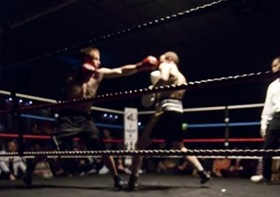
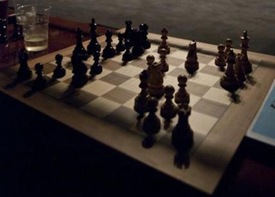
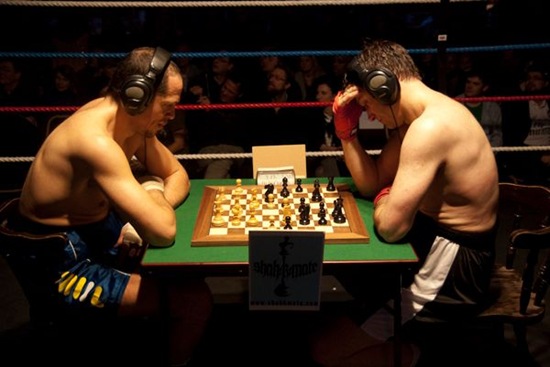
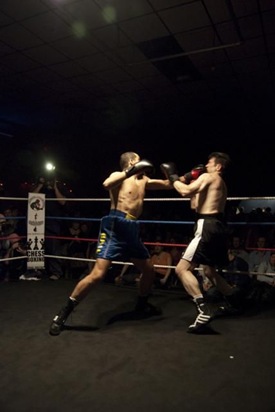

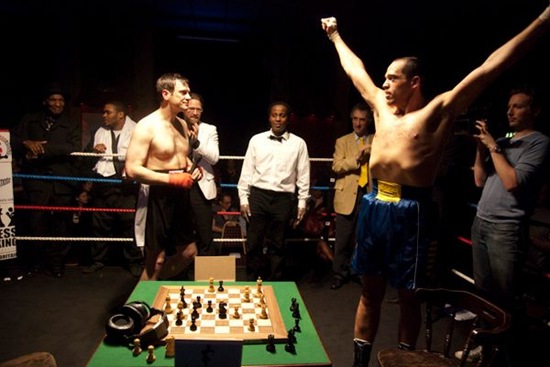
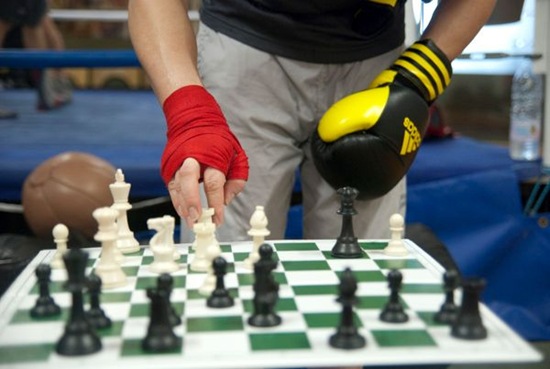
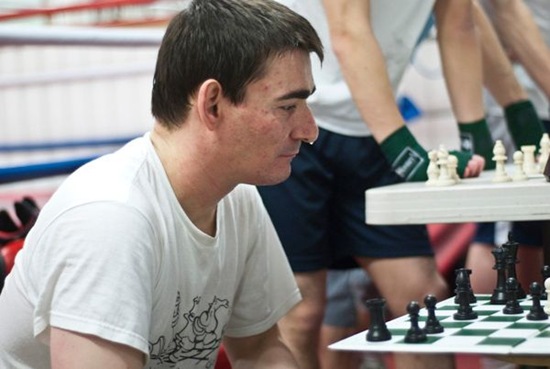
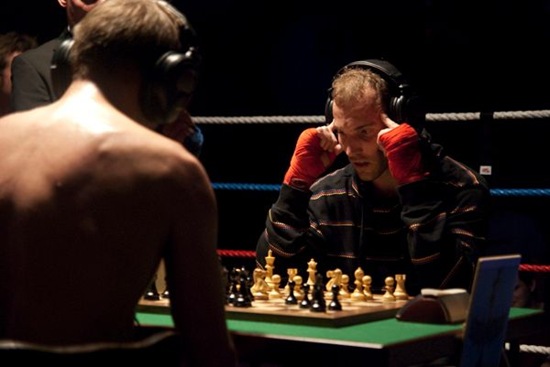
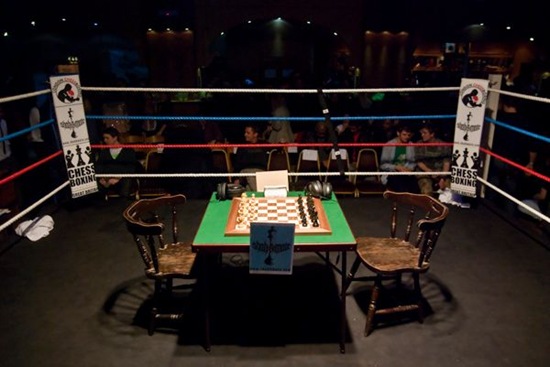

No comments:
Post a Comment
Please adhere to proper blog etiquette when posting your comments. This blog owner will exercise his absolution discretion in allowing or rejecting any comments that are deemed seditious, defamatory, libelous, racist, vulgar, insulting, and other remarks that exhibit similar characteristics. If you insist on using anonymous comments, please write your name or other IDs at the end of your message.